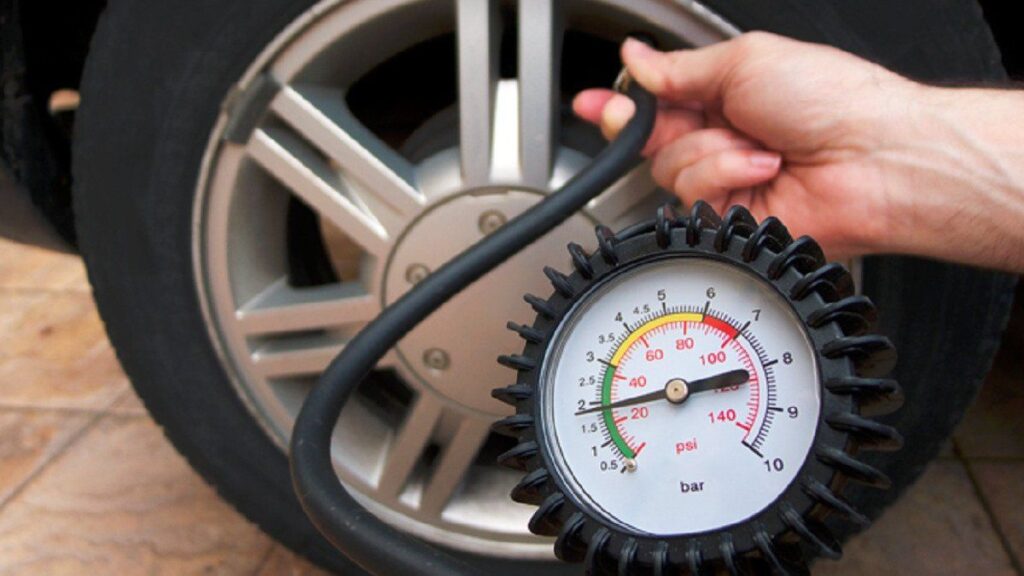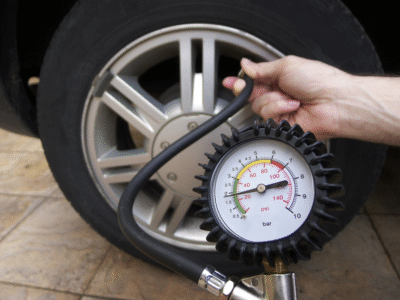
Volkswagen Polo Tyre Pressure Guide: Complete Chart, PSI, Bar, and Maintenance Tips (2025 Update)

Maintaining the correct tyre pressure on your Volkswagen Polo is essential for safety, performance, and fuel efficiency. In this comprehensive guide, we’ll cover every Polo variant, its optimal PSI values, and professional recommendations to help you extend tyre life and improve handling.
- Why Correct Tyre Pressure Matters for the Volkswagen Polo
- Where to Find Your Polo’s Tyre Pressure Information
- Volkswagen Polo Tyre Pressure Chart (All Models)
- Ideal Tyre Pressure by Driving Condition
- How to Check and Adjust Tyre Pressure
- Tyre Pressure Conversion Table
- How Incorrect Tyre Pressure Affects Performance
- Recommended Maintenance Frequency
- Volkswagen Polo Tyre Pressure Monitoring System (TPMS)
- Pro Tyre Pressure Tips for Volkswagen Polo Owners
- Volkswagen Polo Tyre Pressure for Spare Wheel
- Common Tyre Pressure Mistakes
- Seasonal Tyre Pressure Adjustments
- Frequently Asked Questions (FAQs)
- Conclusion: Keep Your Polo at Peak Performance
Why Correct Tyre Pressure Matters for the Volkswagen Polo
The Volkswagen Polo is a precision-engineered hatchback that relies on balanced tyre inflation for stability, braking, and comfort. Properly inflated tyres:
- Enhance fuel economy by reducing rolling resistance.
- Improve cornering grip and braking distance.
- Extend tyre life by preventing uneven wear.
- Support optimal performance across varying weather conditions.
Where to Find Your Polo’s Tyre Pressure Information
You can locate your Polo’s recommended tyre pressure:
- On a placard inside the driver’s door jamb.
- On the fuel filler cap.
- Inside the owner’s manual under “Wheels and Tyres”.
All pressure readings are typically given in PSI (pounds per square inch), with equivalents in bar or kPa (kilopascals).
Volkswagen Polo Tyre Pressure Chart (All Models)
Below is an updated tyre pressure chart for Volkswagen Polo models across various generations and engine types.
You may be interested in reading Hyundai Tucson Dashboard Warning Lights and Symbols Explained (2005–2025 Models)
Hyundai Tucson Dashboard Warning Lights and Symbols Explained (2005–2025 Models)| Model / Engine | Tyre Size | Front PSI | Rear PSI | Bar (Front/Rear) |
|---|---|---|---|---|
| Polo 1.0 | 185/60 R15 84H | 28 | 28 | 1.9 / 1.9 |
| Polo 1.0 | 215/40 R17 83H | 28 | 28 | 1.9 / 1.9 |
| Polo 1.2 | 165/70 R14 81T | 29 | 28 | 2.0 / 1.9 |
| Polo 1.2 TSI | 185/60 R15 84H | 28 | 28 | 1.9 / 1.9 |
| Polo 1.4 | 195/55 R15 85V | 28 | 28 | 1.9 / 1.9 |
| Polo 1.4 16V | 205/40 R17 84W XL | 32 | 29 | 2.2 / 2.0 |
| Polo 1.4 GTI | 215/40 R17 87V XL | 36 | 39 | 2.5 / 2.7 |
| Polo 1.8 GTI | 215/40 R17 87W XL | 36 | 39 | 2.5 / 2.7 |
| Polo 1.9 TDI | 195/55 R15 85V | 32 | 29 | 2.2 / 2.0 |
| Polo 1.9 SDI | 205/40 R17 84W XL | 32 | 29 | 2.2 / 2.0 |
Tip: Always verify the pressure on cold tyres—before driving or after parking overnight—to ensure accuracy.
Ideal Tyre Pressure by Driving Condition
| Driving Condition | Recommended Adjustment |
|---|---|
| Fully Loaded (Passengers + Luggage) | Add +2 PSI to front and rear |
| Highway / Long Trips | Maintain factory recommended PSI |
| City / Stop-and-Go Traffic | Normal factory pressure |
| Winter Conditions | Increase by +1 PSI for better traction |
| Summer / Hot Weather | Do not overinflate; heat expands air |
How to Check and Adjust Tyre Pressure
Follow this precise method to maintain your Polo’s tyre pressure:
- Use a digital tyre pressure gauge for accurate readings.
- Check pressure when tyres are cold, preferably in the morning.
- Unscrew the valve cap and attach the gauge firmly.
- Compare the reading with the manufacturer’s recommendation.
- Inflate or deflate as necessary using a reliable air compressor.
- Recheck and replace valve caps tightly to prevent air leaks.
Tyre Pressure Conversion Table
| PSI | Bar | kPa |
|---|---|---|
| 28 | 1.9 | 193 |
| 29 | 2.0 | 200 |
| 32 | 2.2 | 220 |
| 36 | 2.5 | 248 |
| 39 | 2.7 | 269 |
How Incorrect Tyre Pressure Affects Performance
Underinflated Tyres
- Increased fuel consumption.
- Reduced steering precision.
- Premature shoulder wear.
- Higher risk of overheating and blowouts.
Overinflated Tyres
- Reduced ride comfort.
- Uneven centre tread wear.
- Decreased traction on wet roads.
Recommended Maintenance Frequency
- Monthly Checks: Measure PSI and adjust if necessary.
- Before Long Trips: Inspect all tyres including the spare.
- Seasonal Changes: Recalibrate pressure as temperature affects air density.
- After Tyre Service: Always confirm correct inflation.
Volkswagen Polo Tyre Pressure Monitoring System (TPMS)
Modern Polo models are equipped with a TPMS sensor that alerts you when tyre pressure deviates from the safe range.
When the TPMS Light Comes On:
- Pull over safely and inspect all tyres.
- Use a gauge to verify the actual PSI.
- Inflate or deflate to the correct levels.
- Reset the TPMS via the dashboard menu or infotainment settings.
Pro Tyre Pressure Tips for Volkswagen Polo Owners
- Use nitrogen for steadier pressure under temperature fluctuations.
- Rotate tyres every 10,000 km for even wear.
- Balance and align wheels annually to maintain stability.
- Avoid cheap gauges—invest in a high-quality digital or analog meter.
Volkswagen Polo Tyre Pressure for Spare Wheel
Even though often neglected, the spare wheel should be inflated 5–10 PSI higher than the standard operating pressure to ensure readiness during emergencies.
Common Tyre Pressure Mistakes
- Judging inflation by visual appearance.
- Ignoring slow leaks or valve damage.
- Forgetting temperature impact on air density.
- Overinflating for “better handling” (a common myth).
Seasonal Tyre Pressure Adjustments
Summer (Above 25°C):
Air expands—monitor weekly and avoid overinflation.
You may be interested in reading Hyundai Tucson Dashboard Warning Lights and Symbols Explained (2005–2025 Models)
Hyundai Tucson Dashboard Warning Lights and Symbols Explained (2005–2025 Models) Best Engine Oil for Hyundai Tucson (2025 Guide): Complete Oil Type, Viscosity, and Maintenance Chart
Best Engine Oil for Hyundai Tucson (2025 Guide): Complete Oil Type, Viscosity, and Maintenance ChartWinter (Below 10°C):
Air contracts—add 1–2 PSI for stability and fuel efficiency.
Frequently Asked Questions (FAQs)
1. What is the standard tyre pressure for a VW Polo?
Typically between 28–32 PSI, depending on model and tyre size.
2. Should tyre pressure be higher for long journeys?
Yes, increase by 2 PSI for extended highway travel with a full load.
3. How often should I check tyre pressure?
At least once per month and before long trips.
4. Does tyre pressure affect fuel economy?
Yes—proper inflation can improve fuel efficiency by up to 3%.
 Hyundai Tucson Dashboard Warning Lights and Symbols Explained (2005–2025 Models)
Hyundai Tucson Dashboard Warning Lights and Symbols Explained (2005–2025 Models) Best Engine Oil for Hyundai Tucson (2025 Guide): Complete Oil Type, Viscosity, and Maintenance Chart
Best Engine Oil for Hyundai Tucson (2025 Guide): Complete Oil Type, Viscosity, and Maintenance Chart How to Reset the Service Light on a Hyundai Tucson – Quick and Easy Guide
How to Reset the Service Light on a Hyundai Tucson – Quick and Easy Guide5. What happens if I ignore low tyre pressure?
It leads to uneven wear, overheating, reduced traction, and safety risks.
Conclusion: Keep Your Polo at Peak Performance
Consistent tyre pressure maintenance isn’t just a matter of efficiency—it’s about control, comfort, and safety. For every Volkswagen Polo driver, mastering PSI management is one of the simplest yet most impactful habits. Check it monthly, adjust with care, and enjoy every mile with confidence.
If you want to know other articles similar to Volkswagen Polo Tyre Pressure Guide: Complete Chart, PSI, Bar, and Maintenance Tips (2025 Update) you can visit the category Service and Parts.
Deja una respuesta






More content of your interest